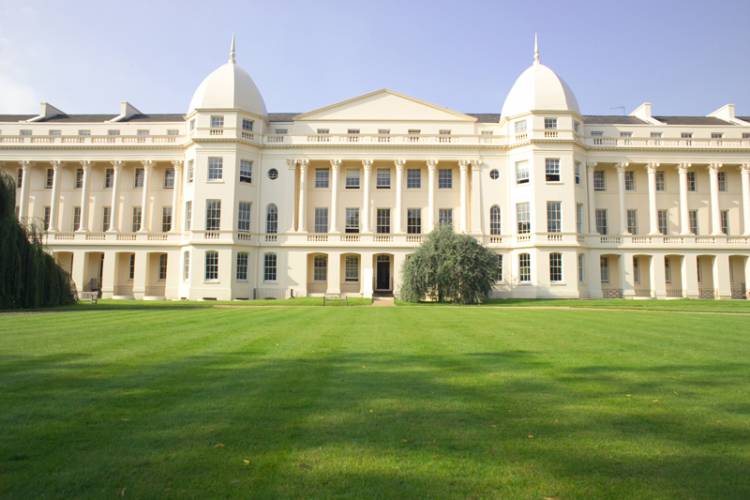When it comes to choosing the very best business school in Europe, the choice may boil down to London Business School or INSEAD. Although there are plenty of prestigious MBA programs on the continent, the pairs are among the most revered. The Financial Times Global MBA Rankings 2018 placed INSEAD second in the world behind Stanford, with LBS in fourth.
In the 2017 Bloomberg Businessweek International MBA Ranking, INSEAD leads the pack, with LBS just behind.
While LBS and INSEAD share similarities – not least superb teaching faculty, excellent career outcomes and facilities – there are key differences between them that prospective students must consider in order to make an informed choice.
INSEAD vs. LBS: MBA program comparison
Both MBA programs are known for their quality and rigor.
LBS offers greater flexibility, with exit points at 15, 18 and 21 months. This enables students to complete summer internships, which some employers say are vital to being hired full-time, particularly investment banks. Students also have the option to complete an international exchange, take part in a consultancy project or join the entrepreneurship summer school.
 Serhat Pakyuz is an LBS alumnus from the MBA 2017 class who works at Amazon. He says: “The 21-month timeline offered so much that I didn’t think twice about staying for the long haul.
Serhat Pakyuz is an LBS alumnus from the MBA 2017 class who works at Amazon. He says: “The 21-month timeline offered so much that I didn’t think twice about staying for the long haul.
“I sampled three career options throughout my MBA – taking on internships at a strategy consulting firm and a fintech startup, before taking on a full-time role [at Amazon].
“I also visited over 20 countries with my classmates throughout the course of the MBA.”
All LBS students are required to take core modules covering the basics of business – such as finance, marketing and strategy – and then specialize by taking up to 12 electives from a choice of 70. They include social enterprise, negotiation and data mining.
LBS features a combination of case discussions, lectures and group work, whereas INSEAD is renowned for its case studies –considered as second to only Harvard Business School.
At INSEAD, students also take core courses and can specialize from a choice of 75 different electives in subjects such as technology and operations management, political science and organizational behavior.
INSEAD vs. LBS: MBA program cost
The advantage for INSEAD students is the shorter program length – a breezy but intense 10 months. INSEAD also gives MBAs the option to do a two-month internship if they choose a January start.
“You’re paying tuition for a shorter time at INSEAD, so the cost is less,” says Caroline Diarte Edwards, director of Fortuna Admissions and former INSEAD director of MBA admissions and financial aid.
“You’re also incurring living costs and foregoing your salary for less time,” she says.
Top 10 MBA Programs for Consulting
As of 2018, LBS quotes a fee of £78,500 (equivalent to €89,856) for tuition and materials, while INSEAD charges €84,000.
Prospective MBAs should consider currency fluctuations, too. According to Emma Bond, former senior manager of MBA admissions at LBS, one of the reasons LBS saw an increase in applications was because the pound dropped after the Brexit referendum, and therefore the relative cost to going to LBS dropped for people coming from the EU or earning US dollars.
INSEAD vs. LBS: MBA admissions requirements and class profiles
Both schools are exceedingly difficult to get into, with a rigorous and competitive selection process.
The big difference is in class size. INSEAD has a significantly larger class – 1039 MBA students to LBS’s 431. “If an applicant’s priority is building the largest possible network, then INSEAD could be the choice,” says Alex Min, CEO of The MBA Exchange admissions consultancy firm. “Or if the student prefers a more intimate group of peers, then LBS might be the way to go.”
Both cohorts have an average age of 29, suggesting that they are mid-career professionals who have amassed significant experience that contributes to peer learning. Average work experience for both classes is about five years.
Average GMAT scores are high – 709 at INSEAD and 708 at LBS, suggesting a high-quality group of students.
The two cohorts are also very diverse, with 94 nationalities represented at INSEAD and 63 at LBS. The programs are male-dominated, with 33 percent women at INSEAD; 39 percent at LBS.
INSEAD vs. LBS: Location and internationality
INSEAD’s larger and more internationally-diverse student body may be attractive for students who want international mobility. The school was founded in 1957 in Fontainebleau, a beautiful and small town outside of Paris that fosters a close-knit community. However, INSEAD’s global footprint is large.
It has a Singapore campus in one of the hubs for business in Southeast Asia—where it offers a full-time MBA as well—so it’s ideal for learning more about working and doing business in Asia and building a network. There’s an Abu Dhabi campus as well.
Laura Subias is an INSEAD MBA candidate from the class of 2018. She says she chose the school for “the opportunity to learn in a completely diverse background, which I was sure would enrich even more the academic experience”.
INSEAD has approximately 55,000 alumni in 170 countries whereas LBS has about 40,000 alumni in 150 countries. INSEAD has 48 alumni chapters in 50 countries while LBS has 114 clubs in 55 countries.
LBS is based in the heart of London, one of the world’s top and most bustling cities. The school is known for its close connections to the City and its financial services firms.
Pakyuz says: “The London location was key. Being 15 minutes from the largest organizations in the world was especially appealing during recruiting. Coffee chats, office visits, and presentations from senior executives were all made easier as a result of the amazing location.”
LBS also has a Dubai campus, where it runs an Executive MBA program.
INSEAD vs. LBS: MBA career outcomes
Both schools offer excellent employment outcomes for MBA graduates. According to 2017 employment data, 93 percent of LBS students receive full-time job offers within three months of graduating, compared to 90 percent at INSEAD.
For mean annual salaries, the two schools are nearly identical: $104,800 at INSEAD and $105,600 at LBS.
The same four companies were the top employers at both schools: McKinsey, Bain, Boston Consulting Group and Amazon.
The most popular industries for MBA grads hire extensively at both schools. For the class of 2017, consulting firms claimed 41 percent of LBS students and 33 percent of INSEAD students. Technology firms recruit 20 percent of LBS students and 19 percent of INSEAD students.
The biggest discrepancy was with financial companies, which hired 26 percent of LBS students and 10 percent of INSEAD students. “Finance-oriented applicants might find LBS to be a better choice in terms of future employment in that industry,” says Min at the MBA Exchange.
Another relatively significant difference is in the geographic spread of new grads. At LBS, 50 percent remain in the UK; 16 percent go elsewhere in Europe; 10 percent go to Asia; 9 percent to US/Canada; 7 percent to Latin America; and 4 percent to Africa/Middle East.
By comparison, INSEAD grads have a broader footprint: 38 percent remain in Western Europe; 26 percent choose Asia/Pacific; 12 percent opt for Northern, Central, Eastern or Southern Europe; 10 percent choose Africa/Middle East; 9 percent North America; and 7 percent Latin America.
“This wider distribution relates in part to INSEAD having campuses in three different regions of the world and requirement that its MBA admits speak a second language,” Min says.
The bottom line is that both schools offer outstanding employment outcomes, despite key differences in program structure, cost and study body.










